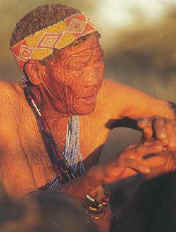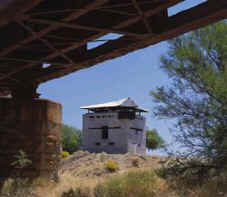The Great Karoo, an area in excess of 400 000 square kilometers was, approximately 250 million years ago, a vast inland sea. As the world's climate gradually changed from cold to hot the water evaporated leaving a swamp where reptiles and amphibians prospered.
 In recent history, less than two hundred years ago large herds of antelope and zebras roamed the grass plains. The Hottentots and Bushmen, the last Stone Age people, shared the “Place of Great Dryness”. They differed basically in their cultures and lifestyles: the Hottentots herding their sheep and cattle in the age-old pastoral pattern and the Bushmen following their traditional nomadic pursuits of hunting and feasting.
In recent history, less than two hundred years ago large herds of antelope and zebras roamed the grass plains. The Hottentots and Bushmen, the last Stone Age people, shared the “Place of Great Dryness”. They differed basically in their cultures and lifestyles: the Hottentots herding their sheep and cattle in the age-old pastoral pattern and the Bushmen following their traditional nomadic pursuits of hunting and feasting.
With the occupation of the area by stock farmers the sheep gradually replaced the game and the grass receded along with the changed grazing and weather patterns.
During the Anglo Boer War of 1899-1902 three Republican Commandos, reinforced by rebels from the Cape Colony, conducted widespread operations throughout the Karoo.
Countless skirmishes took place, with the Calvinia Magisterial district contributing a significant number of fighters to the Republican cause.
Fought both conventionally and as a guerilla struggle over the Karoo's vast expanses, it was a bloody war of attrition wherein both sides used developing technologies to their advantage.
 Numerous abandoned blockhouses can still be seen at strategic locations in the Great Karoo with a prime example at the Geelbeks River 12 kilometres outside Laingsburg.
Numerous abandoned blockhouses can still be seen at strategic locations in the Great Karoo with a prime example at the Geelbeks River 12 kilometres outside Laingsburg.
Currently sheep farming is the economic backbone of the Karoo with other forms of agriculture taking place in areas where irrigation is possible. Lately game farms and tourism to this fascinating area is also making an impact.
Various tour operators specialise in the area.